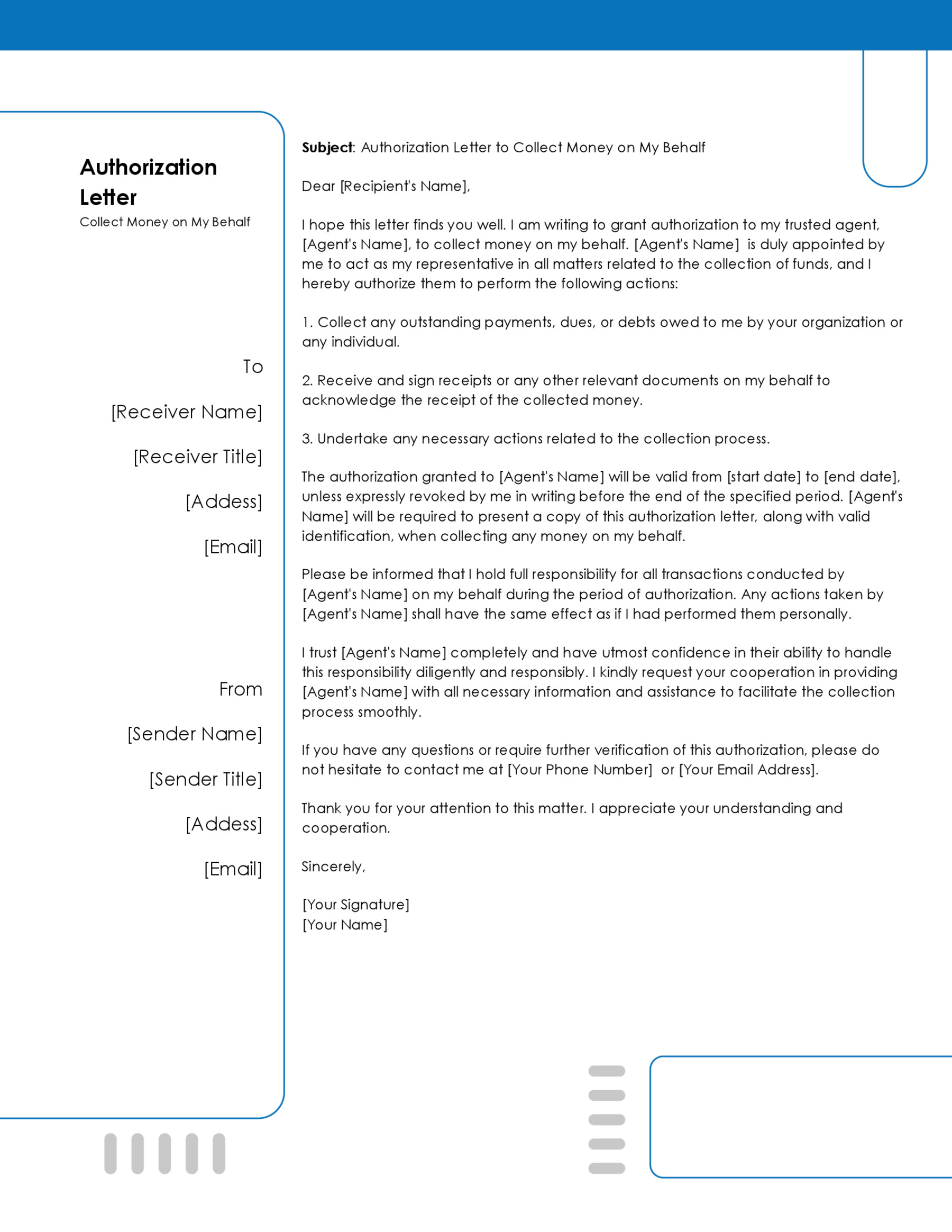A Letter of Authorization to Represent is a written document through which an individual grants another person the power to act on their behalf or carry out specific tasks. This type of letter is particularly useful in situations where you need someone else to represent you, whether it’s for business dealings or personal matters, especially when you are unable to handle those tasks yourself.
The letter of authorization outlines key details such as the authorized representative’s identity, the scope of activities they are permitted to undertake, the duration of their representation, and any limitations to their authority.
An authorization letter to represent is commonly used in the following situations:
- Granting a third-party access to your bank account.
- Allowing a representative to access your medical records for healthcare purposes, or for picking up sensitive documents.
- Empowering an individual to act on your behalf in business transactions that you cannot personally oversee due to urgency or geographical constraints.
- Enabling your colleague to take on your work responsibilities in your absence.
- Transferring decision-making authority to a childcare provider for basic emergency medical decisions.
Sample Letters
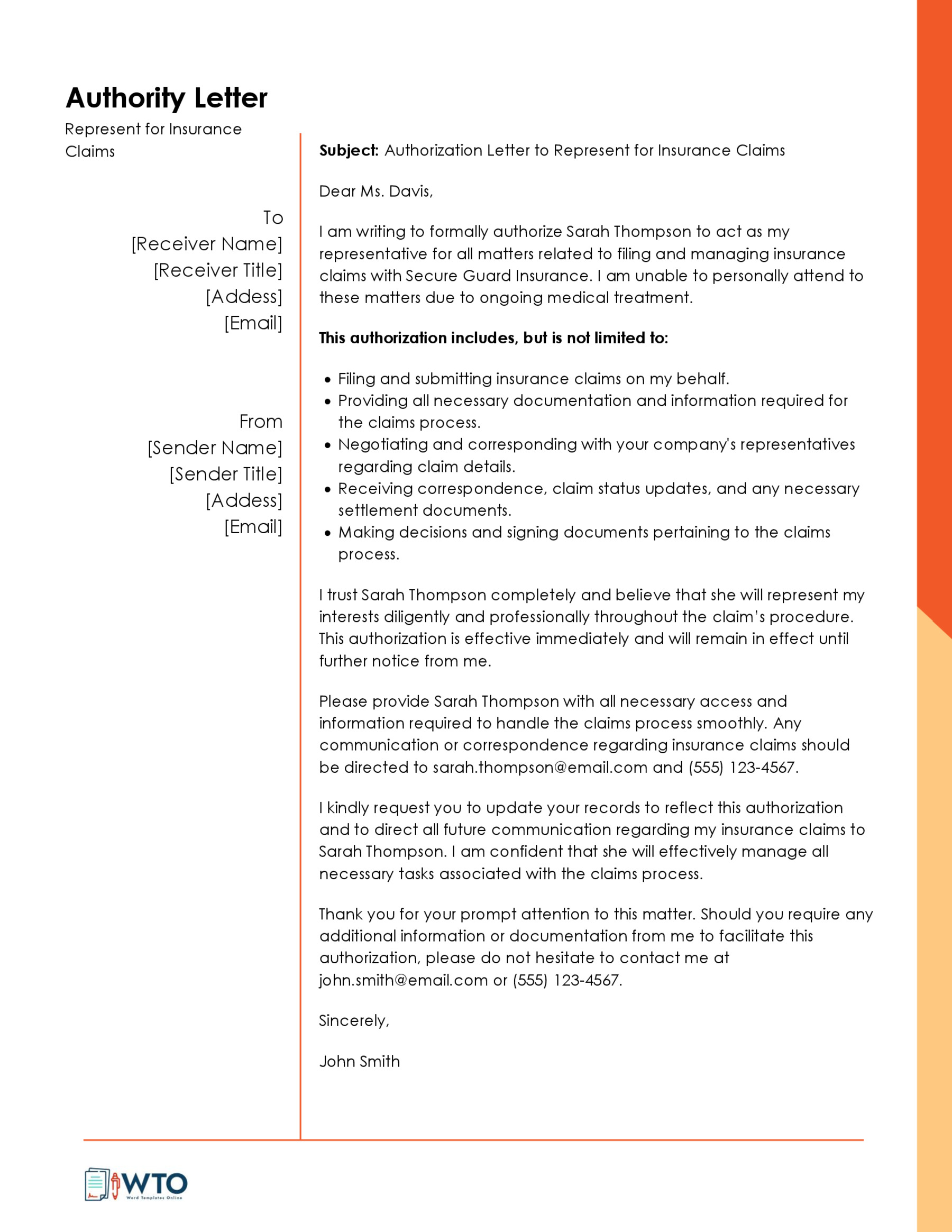
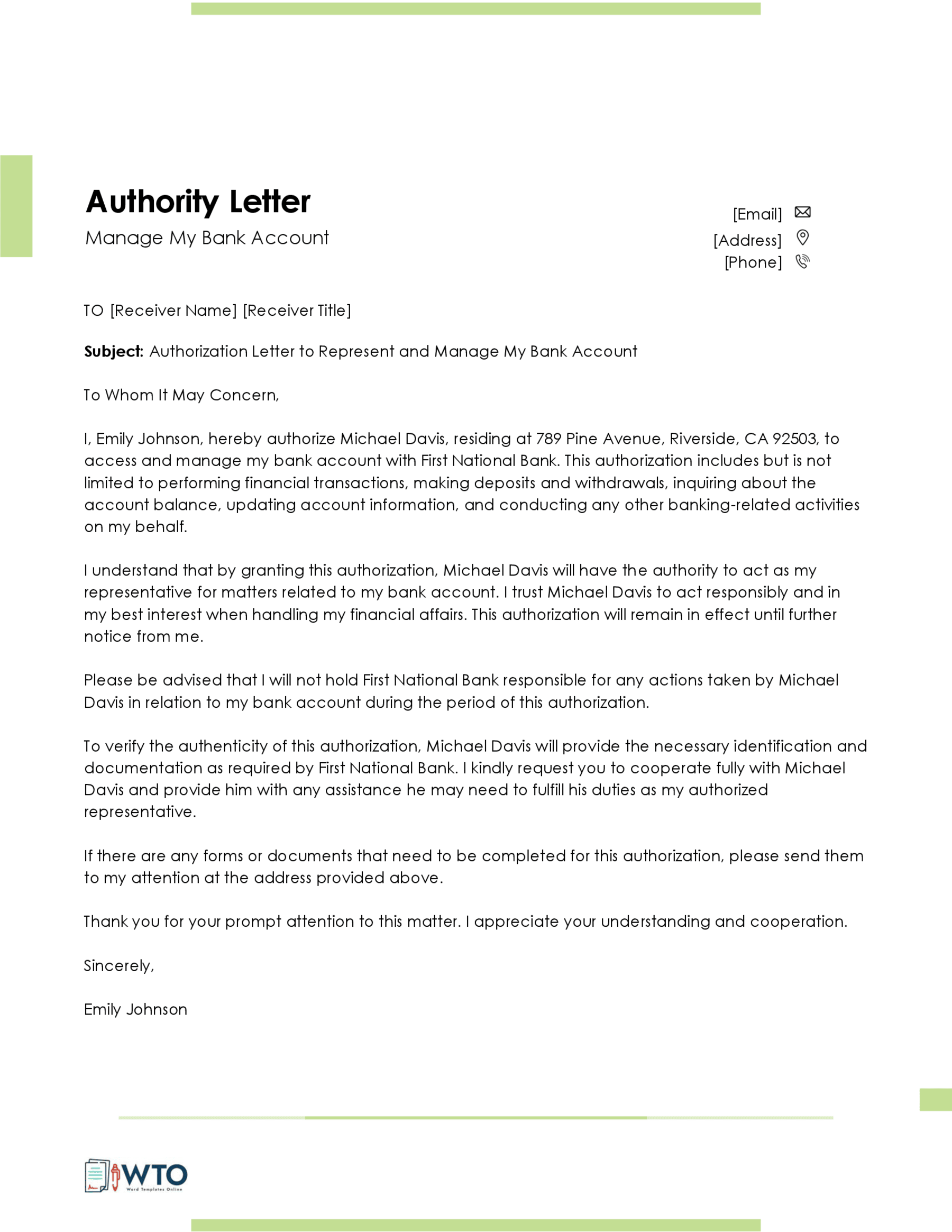
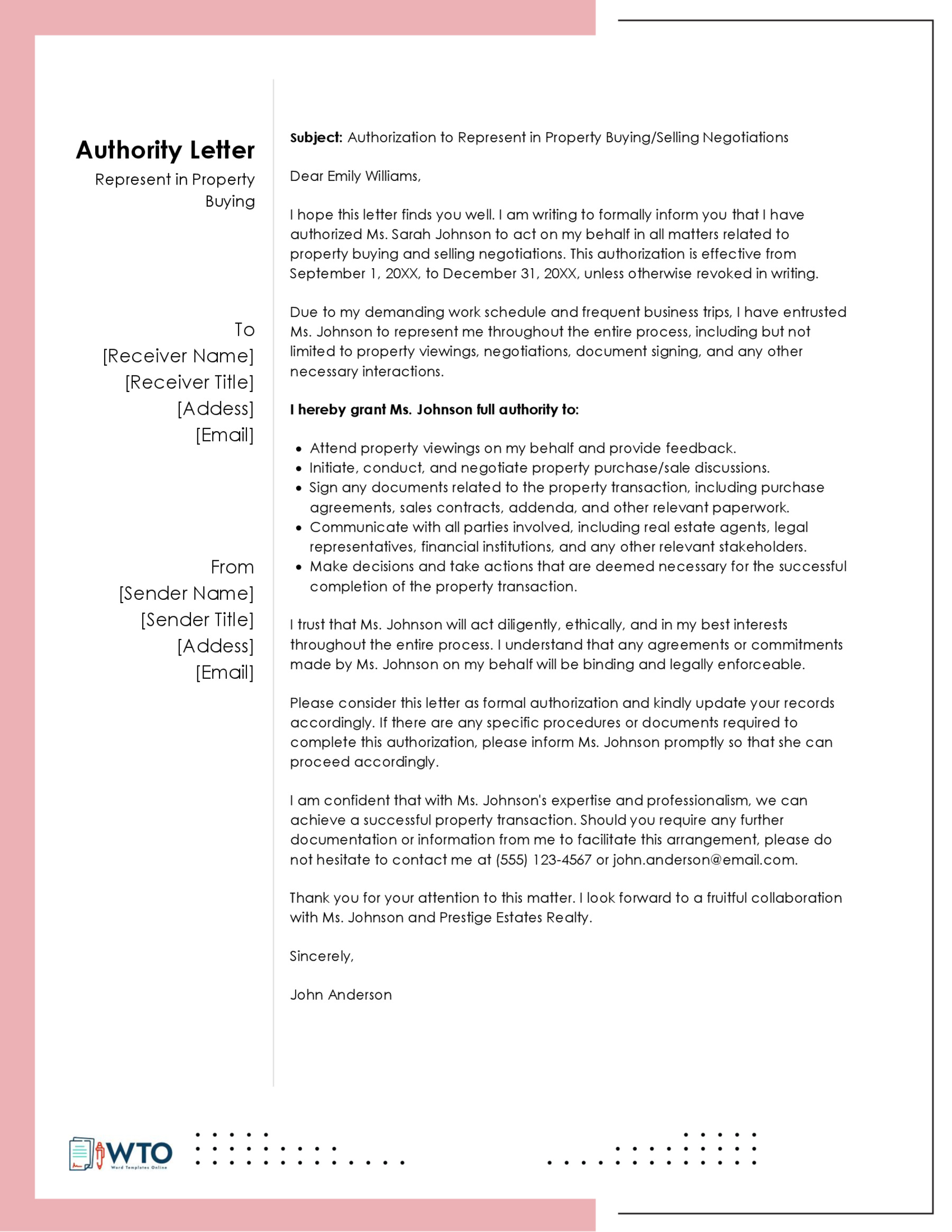
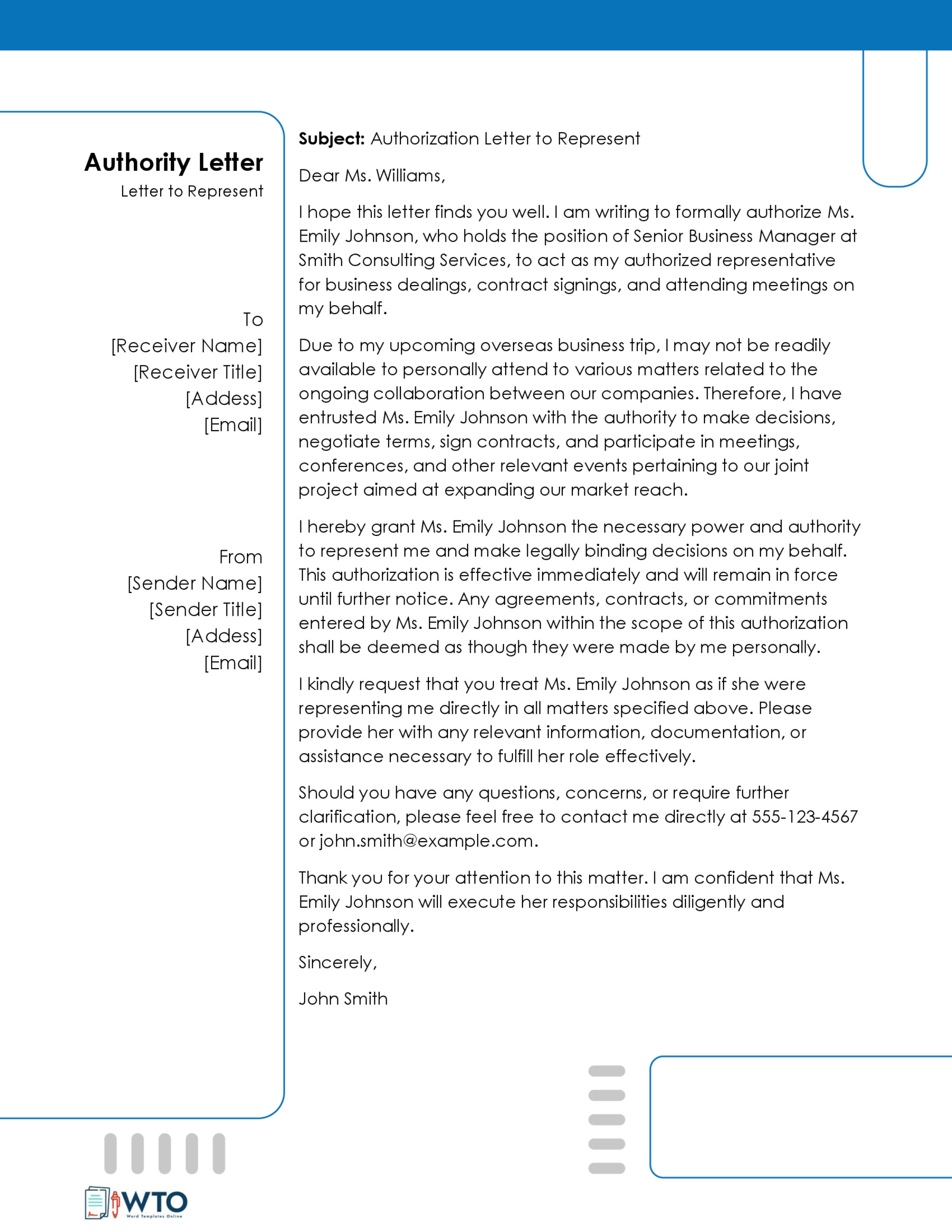
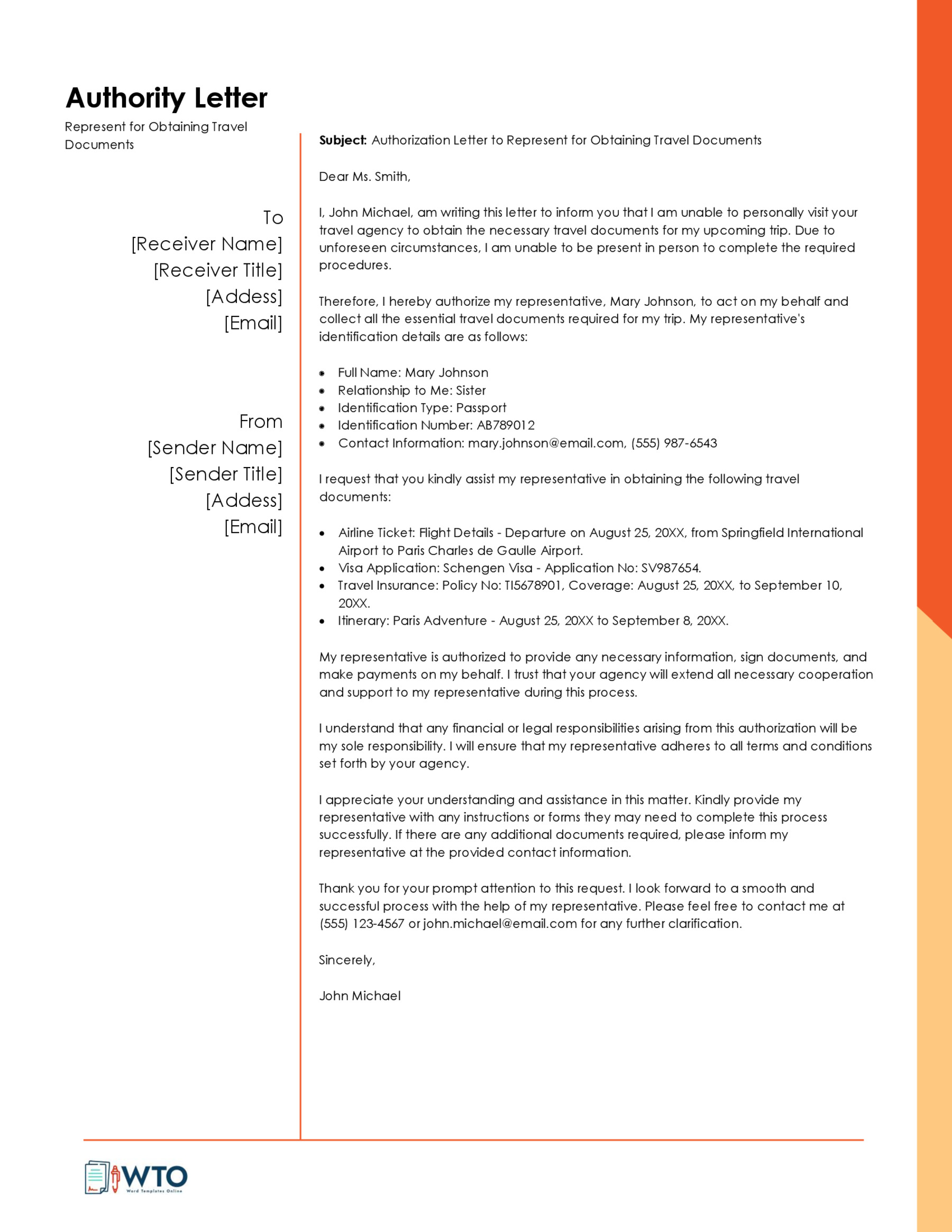
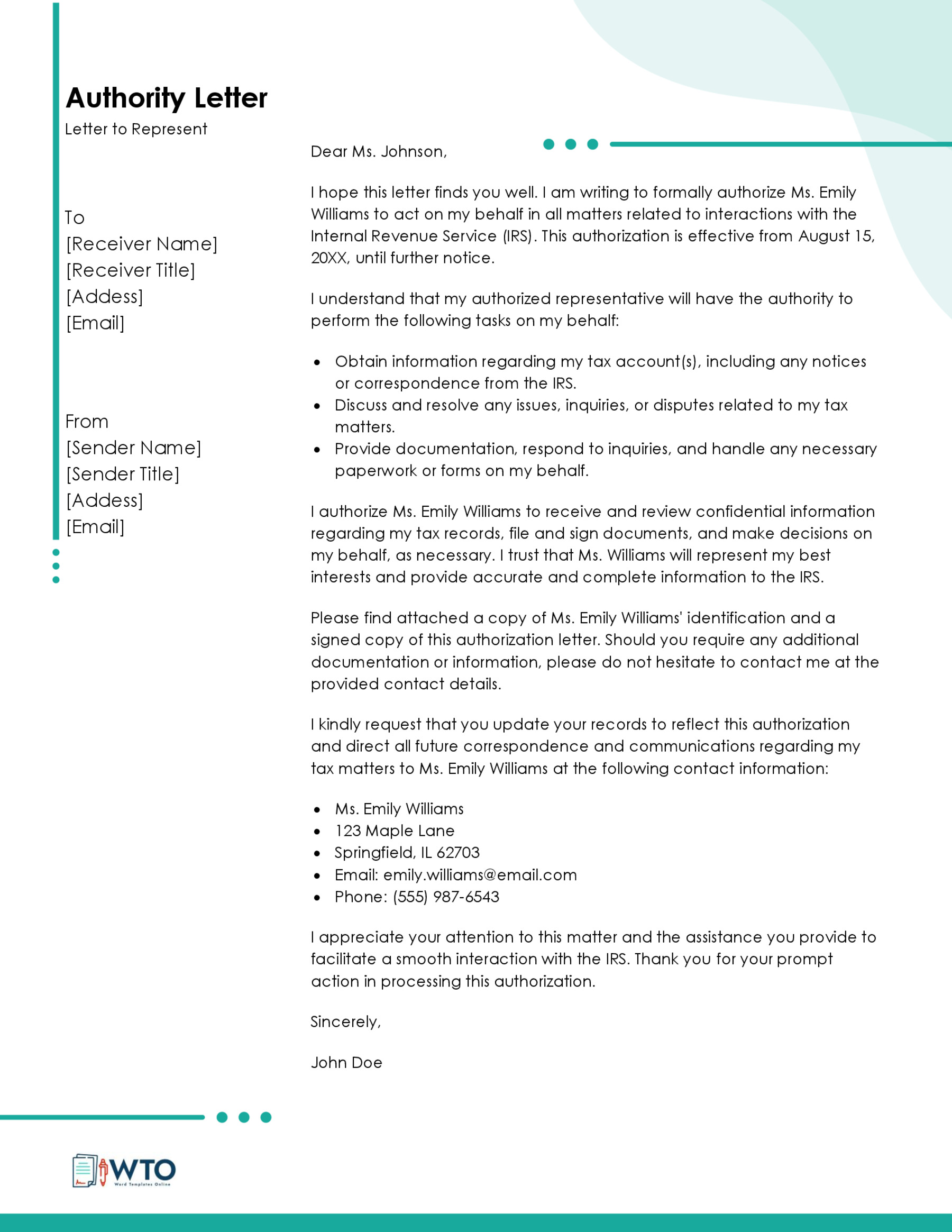
Templates
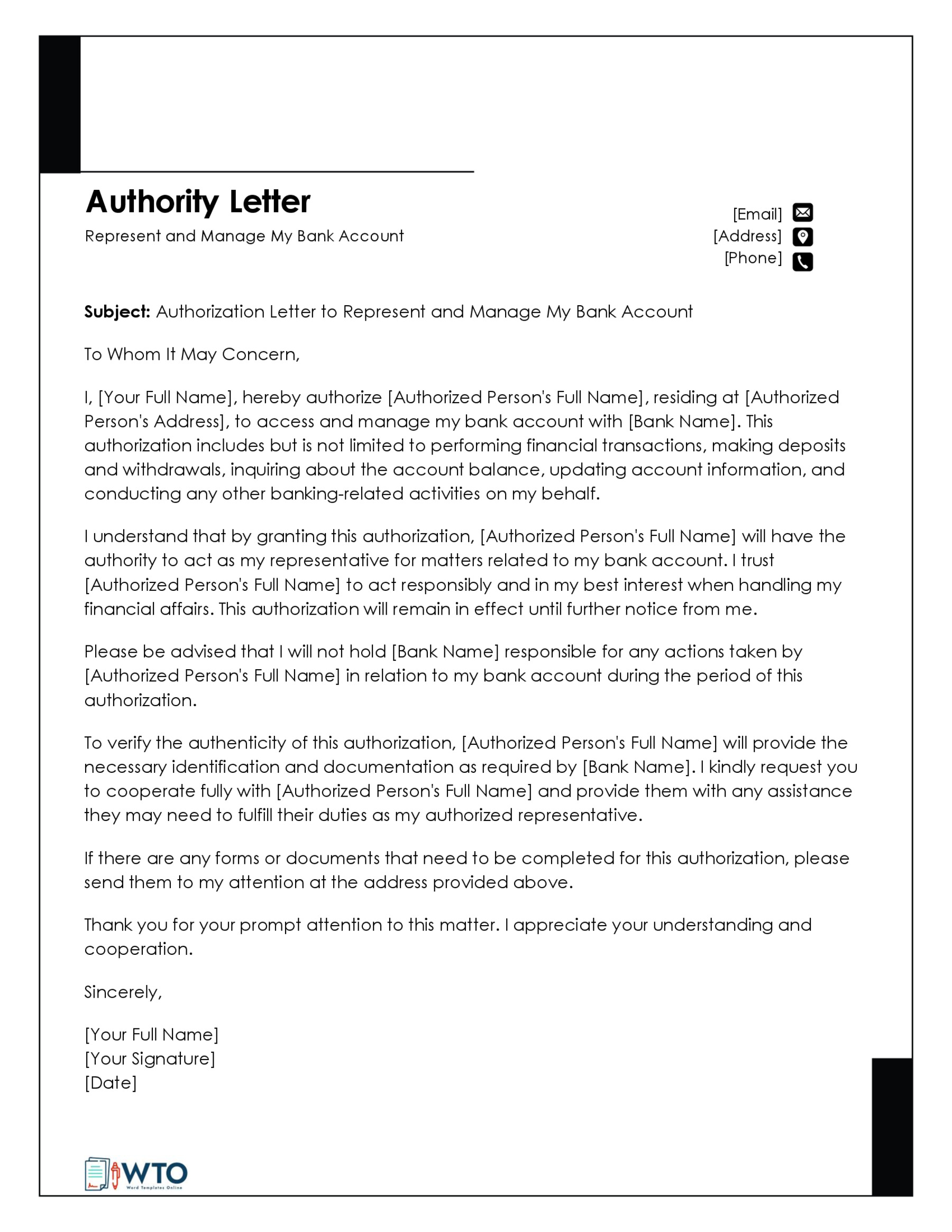
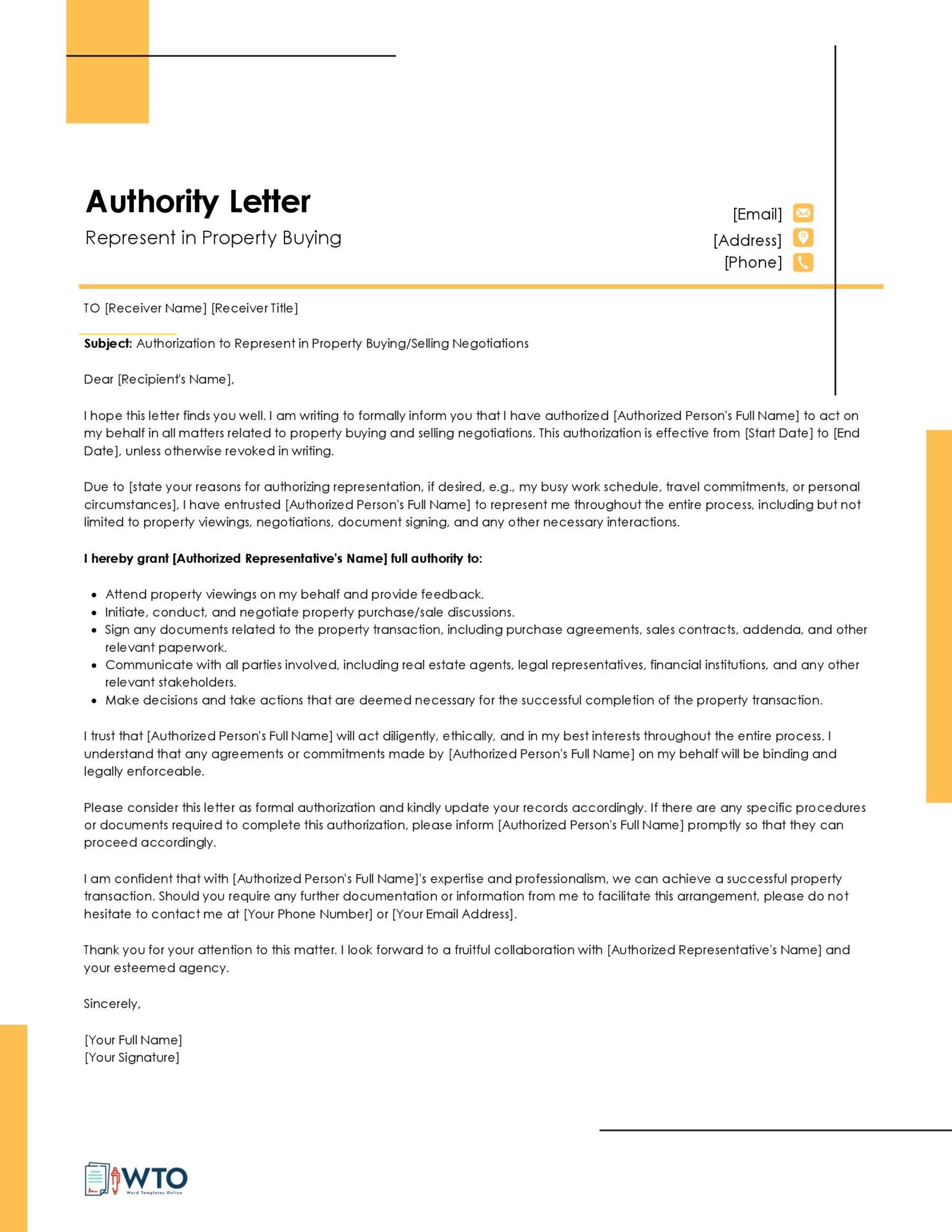
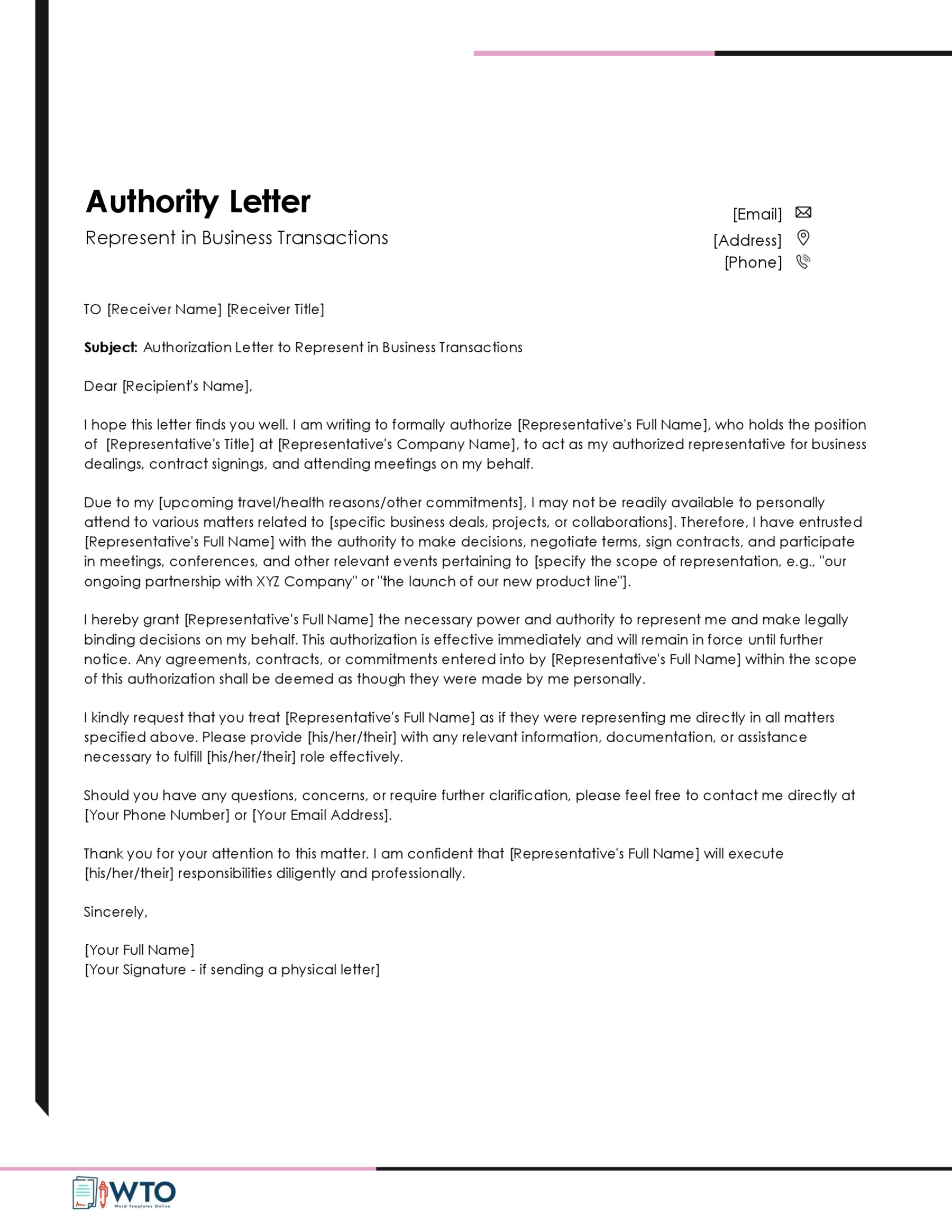
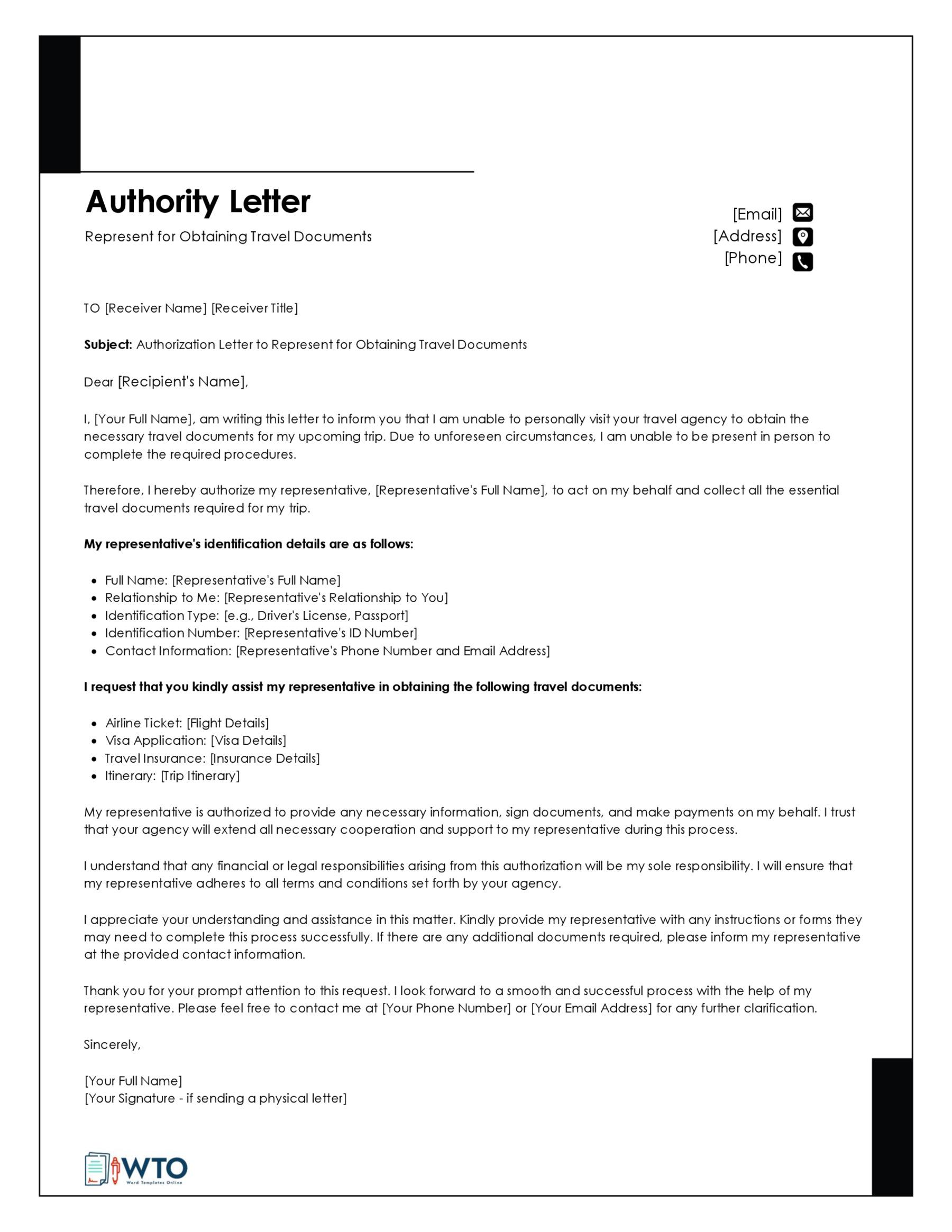
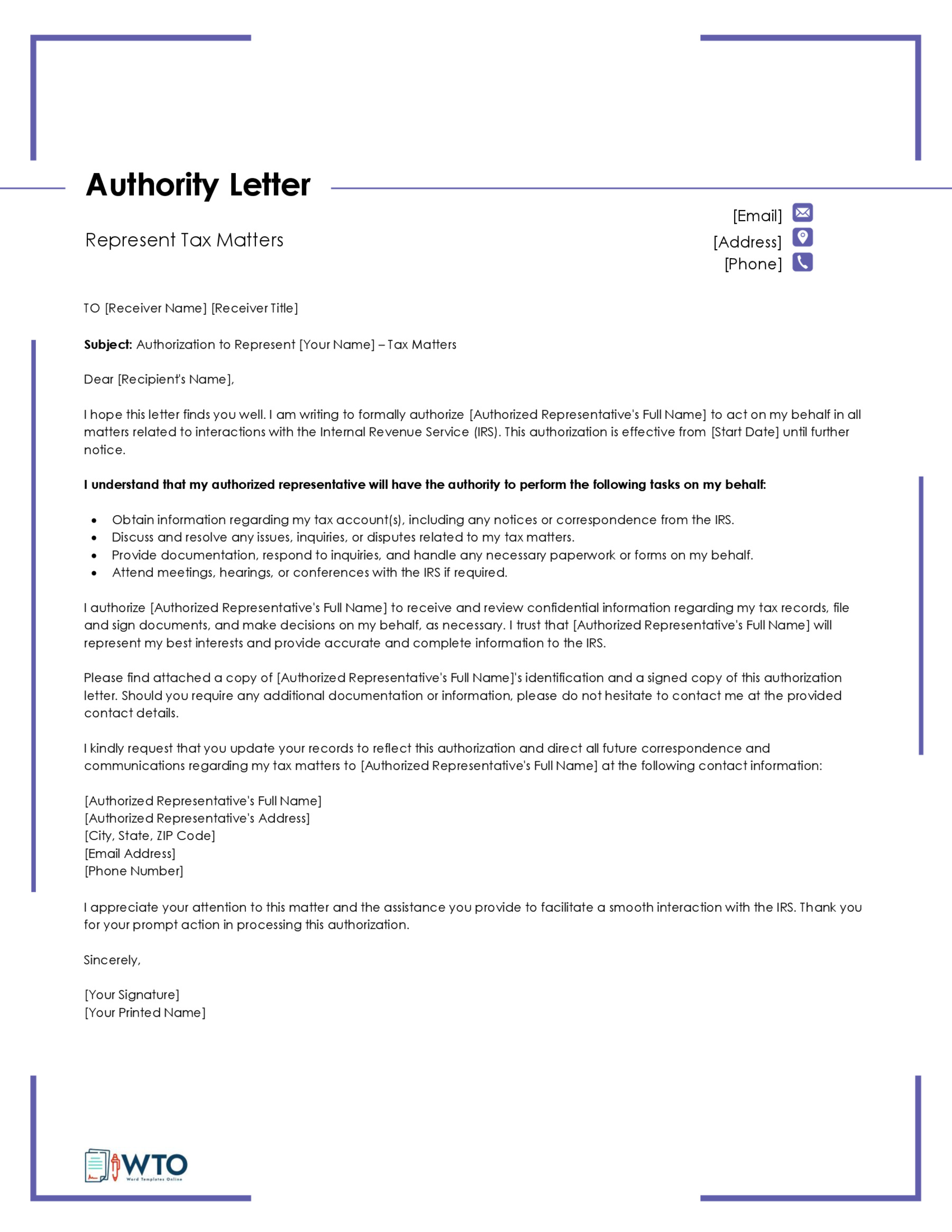
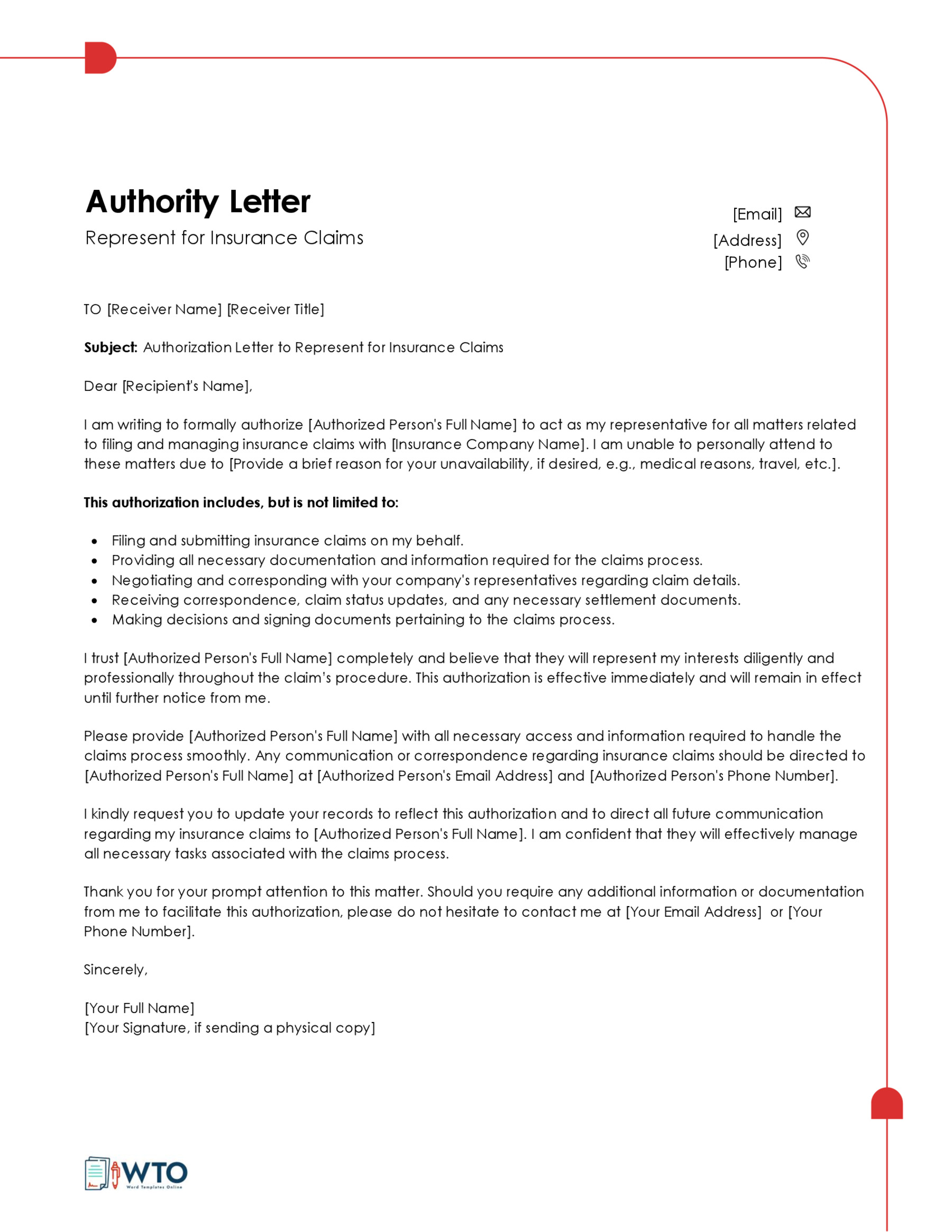
Writing a Letter of Authorization to Represent
Drafting an authorization letter to represent necessitates the inclusion of specific particulars related to the representation. The purpose for such authorization can vary depending on the circumstances. However, the overall structure is typically consistent for most letters of authorization to represent.
Outlined below is a comprehensive step-by-step guide on how to structure your letter when designating someone to represent you in an official capacity:
Section 1: Heading
The first item on the letter of authorization to represent is the header. This section is meant to provide the details of the sender and the recipient.
This information can be captured as follows:
Write your name and address (1st party)
Start by stating your full legal name. This should be followed by your mailing address which must indicate the street address, name of the city, state, and ZIP code. Each piece of information should be allocated its own line. This information is used for identification purposes and future correspondence. It’s important to adhere to left-aligned formatting and single-spacing in accordance with standard business letter conventions.
Specify the date
Afterward, indicate the date when the letter was written. Including the date is essential for record-keeping, particularly if the letter needs to be documented.
Include recipient’s details (2nd party)
The letter should then present the recipient’s identification information. This includes their name and mailing address. It’s crucial to note that the letter of authorization isn’t directed toward the authorized party; rather, it is addressed to the second party (individual or entity) with whom the transaction is being conducted.
Write the salutation
Concluding the header section involves formulating a formal salutation. Ensure to use appropriate titles when addressing the recipient, for example, Dear Mr, Mrs, or Ms, followed by the recipient’s last name. Alternatively, you can use “To” instead of “Dear.” Additionally, ensure to include the recipient’s specific name and title. For generic authorization letters, the salutation “To Whom It May Concern” is suitable. When incorporating titles, avoid using first names. For example, write “Dear Dr. May” instead of “Dear Dr. Ashley May.”
Section 2: Introduction
Following the header, provide a brief and clear introduction that identifies the parties involved in the authorization.
Outline this information as follows:
Briefly state your authorization
Start by introducing yourself and additional information regarding the transaction or activity you want to be completed by the representative.
Verify the identity of the person being authorized (3rd party)
Next, declare the person you are appointing as your representative. State their full name in a clear and concise manner.
Section 3: Body
The content of a letter of authority to represent should be direct and concise, devoid of unnecessary information.
The following details must be included in the letter:
Specify the authorized tasks and scope
Clearly outline the specific actions you are granting authorization for the designated party to undertake. Utilize explicit language to outline these responsibilities. This prevents any cases of misinterpretation.
Specify the authorization timeframe
The letter should then outline the first and last day of representation. Ensure to provide the complete date, including the day, month, and year. A predefined timeframe is often required so as to limit the representative’s authority to perform the specified actions within a given period. If the authorization letter is to be used in emergency cases, you can state the validity period.
State reasons for representation
After the dates, briefly mention why you are transferring your authority to undertake a certain action to someone else. Again, the reason can be mentioned briefly without delving into details.
Explain restrictions, if any
If you want to limit the representatives’ authority, duties, and responsibilities, indicate the extent of their authority. Also, clearly specify actions they are not allowed to undertake.
Add a call to action
To conclude the body section, provide your contact information and a CTA (call to action) for inquiries or clarifications. Make it known that the recipient is encouraged to reach out should they have any concerns or questions regarding the letter of authorization to represent.
Section 4: Conclusion
Lastly, a formal conclusion should be provided. The following information can be included in the conclusion:
Sign off
Conclude the letter of authorization to represent with a formal and courteous complimentary close, such as “Sincerely Yours.”
Add signatures
Both parties—the authorizing entity and the designated representative—should append their respective signatures at the bottom of the document. The signatures must be placed adjacent to the corresponding names, accompanied by the date of signing.
Notarize your letter
It is advisable to sign the document in the presence of a notary public or any other witness. This gives the document more credibility and preempts any challenges to the legitimacy of the document.
Do’s and Don’ts
When writing an authorization letter to represent, your goal should be to clearly communicate your precise intent to appoint a representative in a brief, accurate, and efficient manner. Below are the key points to keep in mind when you start writing the letter.
Do’s
The do’s for writing a letter of authorization to represent are as follows:
Write a formal letter
The letter should be written in a business format. This is characterized by a block format, single spacing, no indentation on all paragraphs, and clear separation between paragraphs using blank lines. Additionally, the sender’s details and date, as well as the recipient’s information and salutation, should also be separated with a blank line.
The letter should be typed or printed
The letter of authority to represent should be typed and subsequently printed for signing. Typed and printed letters are more professional and legible than hand-written letters.
Be concise
Be direct and to the point. Letters of authority to represent should remain concise, effectively conveying relevant information in a straightforward manner. Typically, one page is sufficient to document all necessary details.
Give the original letter to proxy
The original copy of the authorization letter should be given to the representative or proxy. This is because they would be required to present it when performing the specified obligations. However, keep a copy of the document for yourself.
Don’ts
They include the following:
Don’t be demanding; rather, be authoritative
The tone you adopt holds significance in authorization letters. Employ a formal yet authoritative tone. Choose language that is respectful and polite while conveying instructions.
Don’t forget to proofread the letter
Proofread the letter for grammatical and spelling mistakes before printing it out and before issuing it. Make appropriate corrections to ensure you send an error-free authorization letter.
Do not miss any important detail
Ensure that you include all relevant details regarding the representation. Before writing out the final draft, always review the letter and include any missing information.
Frequently Asked Questions
A letter of authorization to represent typically involves three key parties. These parties include the original rights holder (also referred to as the first party or authorizing party), the second party is engaged in the transaction or interaction with the first party, and finally, the representative (commonly known as the proxy or third party) who is entrusted with carrying out specific actions on behalf of the first party.
Yes, an authorization letter to represent holds legal weight. If both the first and third parties sign the letter in the presence of a credible witness, such as a notary public, the letter can serve as admissible evidence in a court of law.
To introduce the required modifications to the authorization letter, you must draft a new letter that incorporates the pertinent changes. It’s essential to ensure that the updated letter is notarized as well, as this reinforces its legal validity and enforceability.

